USA VolleyballSep 12, 2017 by FloVolleyball Staff
USA Volleyball CEO Has Vision For A U.S. Pro League
USA Volleyball CEO Has Vision For A U.S. Pro League
American professional volleyball players are forced to go overseas to compete. USA Volleyball CEO Jamie Davis hopes to change that by starting a pro league here in the states.
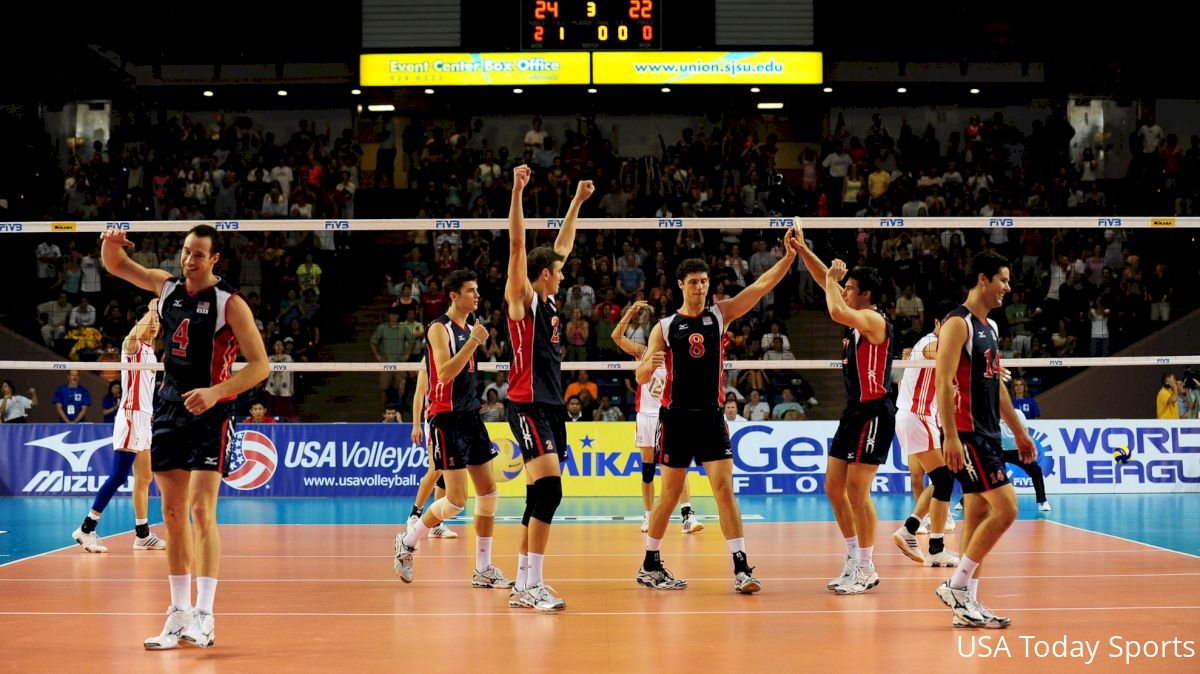
Imagine this scenario: U.S. men's national team star Matt Anderson goes out for dinner with his professional club teammates after a big win and doesn't need the menu translated. Anderson plays for Zenit-Kazan in the Russian Super League. Playing pro ball stateside would most likely mean he could order without help from Rosetta Stone.
"Yes, one-hundred percent, it would be nice to walk into a restaurant and speak my own language," Anderson said of the lack of a professional league in the U.S.
But that might change, and a pro volleyball league in the U.S. could be up and running before the next Olympics.
That's the hope of USA Volleyball CEO Jamie Davis, who said, "My goal on the start-up, is to try and do it this quad, so before 2020."
When he first arrived at USAV, Davis said he learned that nearly 400 American volleyball players play pro ball internationally, something he called "very strange."
If there's that kind of demand, Davis wondered, "Why can't we create a professional league here in the United States?"
[tweet url="https://twitter.com/usavolleyball/status/825389763926585345" hide_media="0" hide_thread="1"]
The first step, Davis said, is to establish a way to deliver the product via platforms such as broadcast networks or the internet, for example, through "the Facebooks, the Twitters, the other ways that the youth are now consuming their content."
With that in place, investors and potential owners can be assured their product will be seen, Davis said, adding that can attract sponsors. While it's not easy getting a professional sports league off the ground, Davis has seen some interest from potential sponsors.
In an interview before the second of two friendlies between the U.S. men's national team and Brazil in August, in a suburb west of Chicago, Davis said, "I've got about six or seven parties that have reached out to me who are interested in trying to invest in it or be a part of it."
[tweet url="https://twitter.com/usavolleyball/status/899074209435013124" hide_media="0" hide_thread="1"]
After the second match with Brazil, a sizeable crowd -- many of them teenage and young girls -- waited for selfies and autographs from the men's national team players.
Several U.S. players gladly obliged, despite having just dropped a hard-fought five-setter to the Olympic gold medalists.
That demographic, young and female, makes up a big part of the target audience a pro league would try to attract.
More girls play high school volleyball than any other team sport, Davis pointed out. The USA Volleyball CEO also pointed to the rapid growth of women's college beach volleyball and boys high school and college volleyball.
"Because of that type of momentum that's going on right now, we are going to be marketing to that core group and that group is a young group. That group is primarily 18 and under."
But a pro league wouldn't be satisfied in only reaching the young demographic, Davis said.
"The parents that come and watch our athletes play are passionate about this game. Just like the soccer mom, they're the volleymom and volleydad, and they are there and passionate. So we're marketing to them, too."
If you have the audience and you have the sponsors, the next question is who would compete in this league if and when it gets underway? In an interview a week before the two friendlies against Brazil, Anderson said Americans playing internationally like the idea of playing pro ball in the USA.
"If you talk to any of us playing overseas, across the board level-wise, everybody has an interest to play in the states," he said.
[instagram url="https://www.instagram.com/p/BTiXhkGgX-K/?taken-by=mja5041" hide_caption="0"]
Does that mean every American player would immediately leave Italy, Switzerland, Russia, Brazil, or Japan and sign contracts with a U.S. pro league? Money of course, would play a role. It's possible, Davis said, that some Americans might even be willing to take a slight pay cut to play in their home country.
"A lot of them find it hard to be away from their families for eight months a year, seven months a year, playing internationally," he said. "If they could play here in the United States, are excited about it so some of them literally might take even a little bit of a lower salary for the sake of being able to play here in the United States, be closer to their family and not have such a disruptive lifestyle."
Middle blocker Rachael Adams played for the U.S. women's national team in the Rio Olympics. She too likes the idea of playing pro ball in her home country, if not right now.
"I could definitely see that as like the end of my career, coming back having an opportunity to be with my family and take home money," Adams said. "Even if it's not as much as I make every year, that's still allowing me to do what I love and play volleyball for a living."
[instagram url="https://www.instagram.com/p/BT_r7i5FKIe/?taken-by=rachaeladams" hide_caption="0"]
Top college players would be a good fit for the league, Adams said, "since they still have that huge college following and people are still following them in their states and know their names."
Certainly a domestic league would also want American players in their prime to do their spiking, blocking, and digging stateside.
"We have some pretty hungry and pretty excited investors who are willing to support and I believe might be willing to put up some types of salaries that would be able to be sustainable for being able to convince some of the players that we're currently transferring internationally, to play in the United States," Davis said.
Level of play is also a consideration.
"Personally it's huge," Anderson said, "sometimes even more so than money, but when you're playing in the top league with the best players, typically the money follows."
When players in the new league hit the court, it will likely be in mid-size arenas, and that would be by design.
"I don't believe you should put a brand-new league into the largest arenas, where even if you have five or six thousand people, it feels empty," Davis said. "I would say you wanna start at arenas that are probably up to ten thousand people."
Will the new league be for women, or men? Possibly both? That's still being figured out, as is the number and location of cities that would host teams.
Perhaps the day will come when Matt Anderson can order a post-match victory dinner in a U.S. city and not have to wonder which words on the menu mean chicken and rice.
By Steve Karmazin

Watch Episode One here.

Watch Episode One here.

"Yes, one-hundred percent, it would be nice to walk into a restaurant and speak my own language," Anderson said of the lack of a professional league in the U.S.
But that might change, and a pro volleyball league in the U.S. could be up and running before the next Olympics.
That's the hope of USA Volleyball CEO Jamie Davis, who said, "My goal on the start-up, is to try and do it this quad, so before 2020."
When he first arrived at USAV, Davis said he learned that nearly 400 American volleyball players play pro ball internationally, something he called "very strange."
If there's that kind of demand, Davis wondered, "Why can't we create a professional league here in the United States?"
[tweet url="https://twitter.com/usavolleyball/status/825389763926585345" hide_media="0" hide_thread="1"]
The first step, Davis said, is to establish a way to deliver the product via platforms such as broadcast networks or the internet, for example, through "the Facebooks, the Twitters, the other ways that the youth are now consuming their content."
With that in place, investors and potential owners can be assured their product will be seen, Davis said, adding that can attract sponsors. While it's not easy getting a professional sports league off the ground, Davis has seen some interest from potential sponsors.
In an interview before the second of two friendlies between the U.S. men's national team and Brazil in August, in a suburb west of Chicago, Davis said, "I've got about six or seven parties that have reached out to me who are interested in trying to invest in it or be a part of it."
[tweet url="https://twitter.com/usavolleyball/status/899074209435013124" hide_media="0" hide_thread="1"]
After the second match with Brazil, a sizeable crowd -- many of them teenage and young girls -- waited for selfies and autographs from the men's national team players.
Several U.S. players gladly obliged, despite having just dropped a hard-fought five-setter to the Olympic gold medalists.
That demographic, young and female, makes up a big part of the target audience a pro league would try to attract.
More girls play high school volleyball than any other team sport, Davis pointed out. The USA Volleyball CEO also pointed to the rapid growth of women's college beach volleyball and boys high school and college volleyball.
"Because of that type of momentum that's going on right now, we are going to be marketing to that core group and that group is a young group. That group is primarily 18 and under."
But a pro league wouldn't be satisfied in only reaching the young demographic, Davis said.
"The parents that come and watch our athletes play are passionate about this game. Just like the soccer mom, they're the volleymom and volleydad, and they are there and passionate. So we're marketing to them, too."
If you have the audience and you have the sponsors, the next question is who would compete in this league if and when it gets underway? In an interview a week before the two friendlies against Brazil, Anderson said Americans playing internationally like the idea of playing pro ball in the USA.
"If you talk to any of us playing overseas, across the board level-wise, everybody has an interest to play in the states," he said.
[instagram url="https://www.instagram.com/p/BTiXhkGgX-K/?taken-by=mja5041" hide_caption="0"]
Does that mean every American player would immediately leave Italy, Switzerland, Russia, Brazil, or Japan and sign contracts with a U.S. pro league? Money of course, would play a role. It's possible, Davis said, that some Americans might even be willing to take a slight pay cut to play in their home country.
"A lot of them find it hard to be away from their families for eight months a year, seven months a year, playing internationally," he said. "If they could play here in the United States, are excited about it so some of them literally might take even a little bit of a lower salary for the sake of being able to play here in the United States, be closer to their family and not have such a disruptive lifestyle."
Middle blocker Rachael Adams played for the U.S. women's national team in the Rio Olympics. She too likes the idea of playing pro ball in her home country, if not right now.
"I could definitely see that as like the end of my career, coming back having an opportunity to be with my family and take home money," Adams said. "Even if it's not as much as I make every year, that's still allowing me to do what I love and play volleyball for a living."
[instagram url="https://www.instagram.com/p/BT_r7i5FKIe/?taken-by=rachaeladams" hide_caption="0"]
Top college players would be a good fit for the league, Adams said, "since they still have that huge college following and people are still following them in their states and know their names."
Certainly a domestic league would also want American players in their prime to do their spiking, blocking, and digging stateside.
"We have some pretty hungry and pretty excited investors who are willing to support and I believe might be willing to put up some types of salaries that would be able to be sustainable for being able to convince some of the players that we're currently transferring internationally, to play in the United States," Davis said.
Level of play is also a consideration.
"Personally it's huge," Anderson said, "sometimes even more so than money, but when you're playing in the top league with the best players, typically the money follows."
When players in the new league hit the court, it will likely be in mid-size arenas, and that would be by design.
"I don't believe you should put a brand-new league into the largest arenas, where even if you have five or six thousand people, it feels empty," Davis said. "I would say you wanna start at arenas that are probably up to ten thousand people."
Will the new league be for women, or men? Possibly both? That's still being figured out, as is the number and location of cities that would host teams.
Perhaps the day will come when Matt Anderson can order a post-match victory dinner in a U.S. city and not have to wonder which words on the menu mean chicken and rice.
By Steve Karmazin
Don't Miss a Beat
It's time to step up your game. Fill in the information below to get the best of FloVolleyball delivered directly to your inbox.MUST SEE FloFilms
Lauren Carlini: Setting the Standard
Watch full episode here.
The Program: Penn State
Watch Episode One here.

All In: USA Women's National Volleyball Team
Watch Episode One here.

Related Content
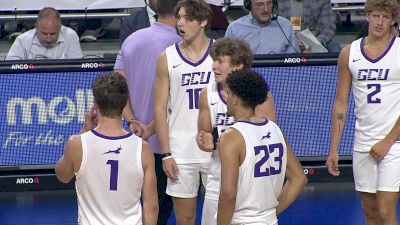 Full Match Replay: Grand Canyon vs UCLA - 2024 MPSF Men's Volleyball Championship | Apr 20 @ 6 PM
Full Match Replay: Grand Canyon vs UCLA - 2024 MPSF Men's Volleyball Championship | Apr 20 @ 6 PMApr 21, 2024
 UCLA Vs. Grand Canyon Men's Volleyball: MPSF Championship How To Watch
UCLA Vs. Grand Canyon Men's Volleyball: MPSF Championship How To WatchApr 19, 2024
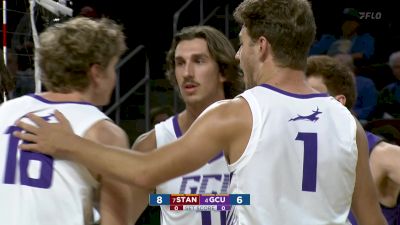 Full Match Replay: Stanford vs Grand Canyon - MPSF SF #2 | Apr 18 @ 7 PM
Full Match Replay: Stanford vs Grand Canyon - MPSF SF #2 | Apr 18 @ 7 PMApr 19, 2024
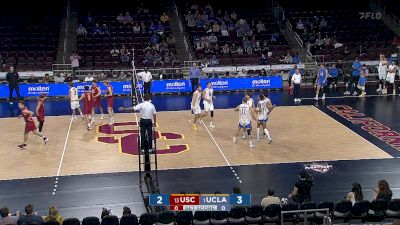 Full Match Replay: USC vs UCLA - MPSF SF #1 | Apr 18 @ 4 PM
Full Match Replay: USC vs UCLA - MPSF SF #1 | Apr 18 @ 4 PMApr 19, 2024
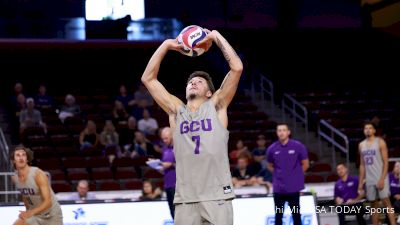 Nicholas Slight With 47 Assists For Grand Canyon Men's Volleyball
Nicholas Slight With 47 Assists For Grand Canyon Men's VolleyballApr 18, 2024
 Full Match Replay: Pepperdine vs Stanford Men's Volleyball - MPSF QF #3 | Apr 17 @ 9 PM
Full Match Replay: Pepperdine vs Stanford Men's Volleyball - MPSF QF #3 | Apr 17 @ 9 PMApr 18, 2024
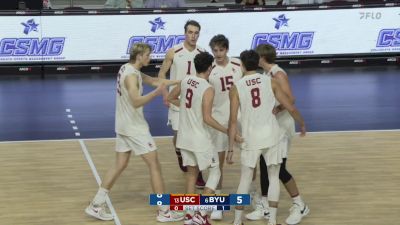 Full Match Replay: USC vs BYU Men's Volleyball - MPSF QF #2 | Apr 17 @ 5 PM
Full Match Replay: USC vs BYU Men's Volleyball - MPSF QF #2 | Apr 17 @ 5 PMApr 18, 2024
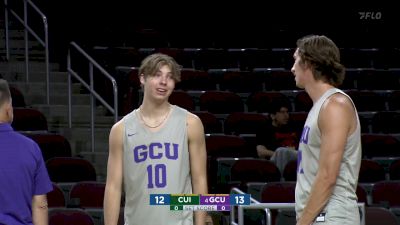 Full Match Replay: Concordia vs Grand Canyon Men's Volleyball - MPSF QF #1 | Apr 17 @ 3 PM
Full Match Replay: Concordia vs Grand Canyon Men's Volleyball - MPSF QF #1 | Apr 17 @ 3 PMApr 17, 2024
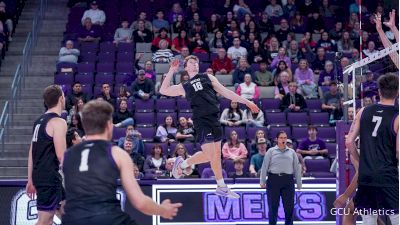 Grand Canyon Men's Volleyball: What To Know Before MPSF
Grand Canyon Men's Volleyball: What To Know Before MPSFApr 17, 2024